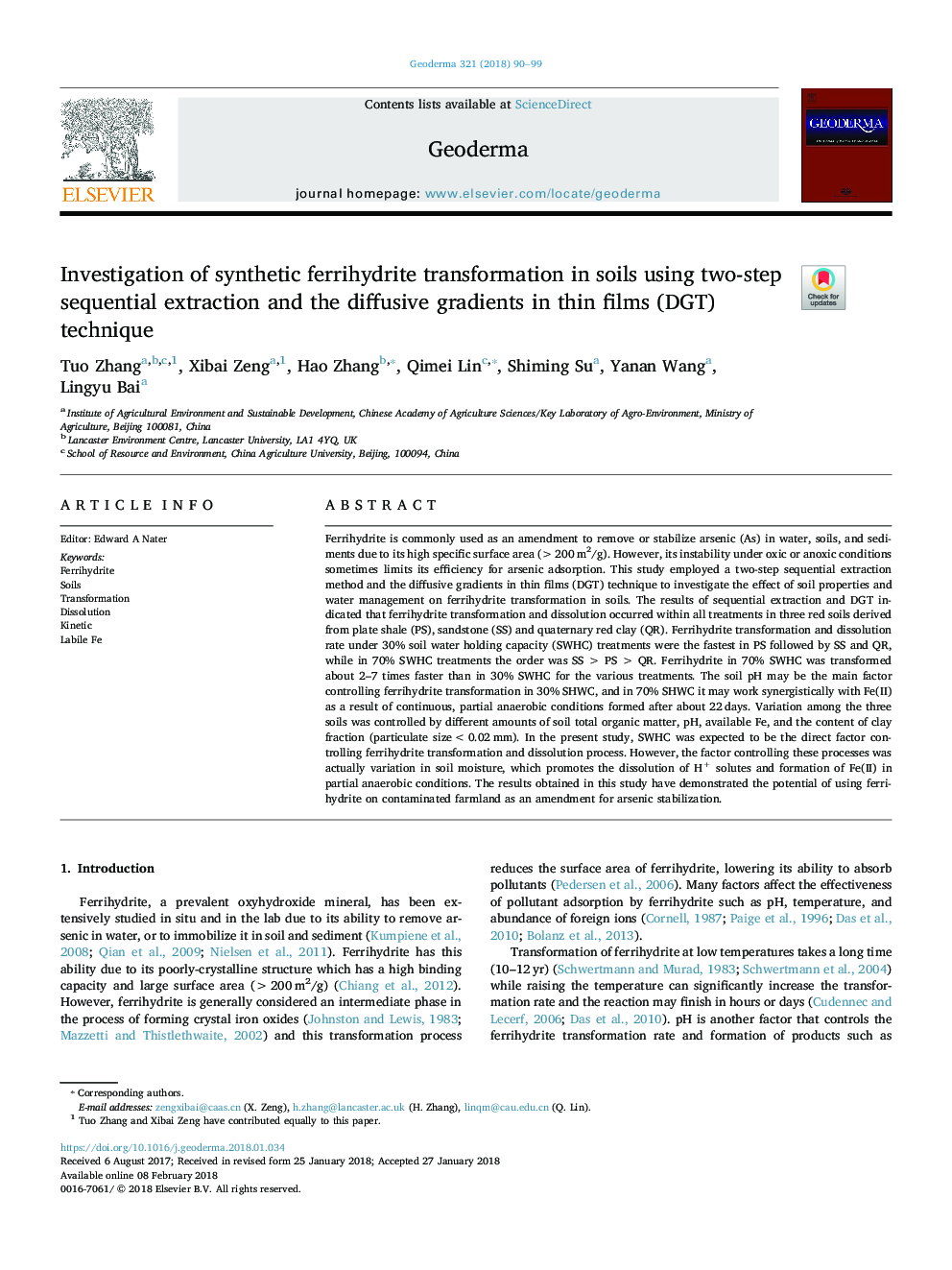| کد مقاله | کد نشریه | سال انتشار | مقاله انگلیسی | نسخه تمام متن |
|---|---|---|---|---|
| 8894100 | 1629396 | 2018 | 10 صفحه PDF | دانلود رایگان |
عنوان انگلیسی مقاله ISI
Investigation of synthetic ferrihydrite transformation in soils using two-step sequential extraction and the diffusive gradients in thin films (DGT) technique
دانلود مقاله + سفارش ترجمه
دانلود مقاله ISI انگلیسی
رایگان برای ایرانیان
کلمات کلیدی
موضوعات مرتبط
مهندسی و علوم پایه
علوم زمین و سیارات
فرآیندهای سطح زمین
پیش نمایش صفحه اول مقاله

چکیده انگلیسی
Ferrihydrite is commonly used as an amendment to remove or stabilize arsenic (As) in water, soils, and sediments due to its high specific surface area (>200â¯m2/g). However, its instability under oxic or anoxic conditions sometimes limits its efficiency for arsenic adsorption. This study employed a two-step sequential extraction method and the diffusive gradients in thin films (DGT) technique to investigate the effect of soil properties and water management on ferrihydrite transformation in soils. The results of sequential extraction and DGT indicated that ferrihydrite transformation and dissolution occurred within all treatments in three red soils derived from plate shale (PS), sandstone (SS) and quaternary red clay (QR). Ferrihydrite transformation and dissolution rate under 30% soil water holding capacity (SWHC) treatments were the fastest in PS followed by SS and QR, while in 70% SWHC treatments the order was SSâ¯>â¯PSâ¯>â¯QR. Ferrihydrite in 70% SWHC was transformed about 2-7 times faster than in 30% SWHC for the various treatments. The soil pH may be the main factor controlling ferrihydrite transformation in 30% SHWC, and in 70% SHWC it may work synergistically with Fe(II) as a result of continuous, partial anaerobic conditions formed after about 22â¯days. Variation among the three soils was controlled by different amounts of soil total organic matter, pH, available Fe, and the content of clay fraction (particulate size <0.02â¯mm). In the present study, SWHC was expected to be the direct factor controlling ferrihydrite transformation and dissolution process. However, the factor controlling these processes was actually variation in soil moisture, which promotes the dissolution of H+ solutes and formation of Fe(II) in partial anaerobic conditions. The results obtained in this study have demonstrated the potential of using ferrihydrite on contaminated farmland as an amendment for arsenic stabilization.
ناشر
Database: Elsevier - ScienceDirect (ساینس دایرکت)
Journal: Geoderma - Volume 321, 1 July 2018, Pages 90-99
Journal: Geoderma - Volume 321, 1 July 2018, Pages 90-99
نویسندگان
Tuo Zhang, Xibai Zeng, Hao Zhang, Qimei Lin, Shiming Su, Yanan Wang, Lingyu Bai,